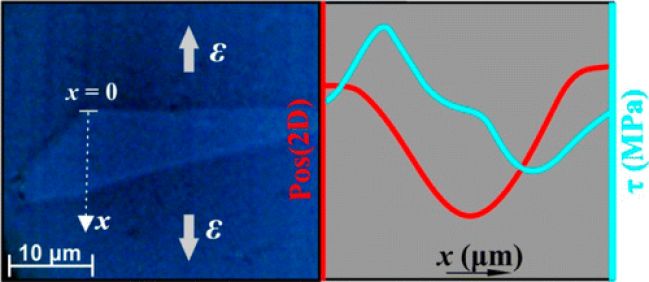Stress Transfer Mechanisms at the Submicron Level for Graphene/Polymer Systems
George Anagnostopoulos, Charalampos Androulidakis, Emmanuel N. Koukaras, Georgia Tsoukleri, Ioannis Polyzos, John Parthenios, Konstantinos Papagelis, and Costas Galiotis. ACS Applied Materials and Interfaces
DOI: 10.1021/am508482n
The stress transfer mechanism from a polymer substrate to a nanoinclusion, such as a graphene flake, is of extreme interest for the production of effective nanocomposites. Previous work conducted mainly at the micron scale has shown that the intrinsic mechanism of stress transfer is shear at the interface. However, since the interfacial shear takes its maximum value at the very edge of the nanoinclusion it is of extreme interest to assess the effect of edge integrity upon axial stress transfer at the submicron scale. Here, we conduct a detailed Raman line mapping near the edges of a monolayer graphene flake that is simply supported onto an epoxy-based photoresist (SU8)/poly(methyl methacrylate) matrix at steps as small as 100 nm.
We show for the first time that the distribution of axial strain (stress) along the flake deviates somewhat from the classical shear-lag prediction for a region of ∼2 μm from the edge. This behavior is mainly attributed to the presence of residual stresses, unintentional doping, and/or edge effects (deviation from the equilibrium values of bond lengths and angles, as well as different edge chiralities).
By considering a simple balance of shear-to-normal stresses at the interface we are able to directly convert the strain (stress) gradient to values of interfacial shear stress for all the applied tensile levels without assuming classical shear-lag behavior. For large flakes a maximum value of interfacial shear stress of 0.4 MPa is obtained prior to flake slipping.
